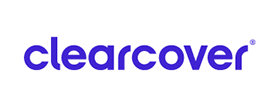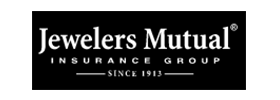If it has been years since you took out a mortgage, you may notice that instead of a Good Faith Estimate, you are getting a Loan Estimate. You may wonder if these are the same things?
In 2015, the Consumer Financial Protection Bureau, a government agency that regulates consumer financial instruments such as mortgages, retired the Good Faith Estimate form (in part) and created the Loan Estimate form.
The Good Faith Estimate form was designed to reveal the terms and fees of a mortgage. However, since the lenders used their own language to describe the loans, multiple estimates could seem very different. Consumers were confused by that document.
The new Loan Estimate consolidates four forms into two: The Loan Estimate and the Closing Disclosure.
The new Loan Estimate is a three-page form that you receive within three business days after you apply. It is not a loan approval or rejection. It simply gives you loan terms, projected payments and closing costs for review.
Since the Loan Estimate standardizes the wording that lenders can use, you’ll see which costs are fixed and which are not, allowing you to shop lenders.
It also prevents surprise fees by establishing tolerance levels. If you do take the loan and the fee amount estimated is more than the amount paid, the lender makes up the difference.
You’ll notice that costs are also broken down into these categories: Loan Costs (origination charges, services you can’t shop for and services you can shop for) and Other Costs (taxes, government recording fees, pre-paid fees and initial escrow payments, for example).
The Closing Disclosure is a five-page form that buyers receive before closing. It has the final terms and costs associated with the mortgage and specifies the amount of money you need on-hand at closing. Buyers can easily compare the Loan Estimate to the Closing Disclosure. Buyers have three days to review and ask questions.
Month: October 2020
Fantastic seller’s market offers best prices in years
The millennial generation has grown up and they want to buy homes.
Every year for the next 10 years, millions of millennials will hit home buying age. The average age of a millennial is 32. The average age for home buying is 31, according to ETF Trends.
No wonder there is a record boom in buyers and potential buyers.
Available housing down
While there are lots of buyers, there are fewer homes for sale. That adds up to a supply and demand formula that puts sellers comfortably seated in the parlor, taking offers.
Half of the buyers who purchased a home in the last three months were forced into a bidding war, according to internet real estate company Redfin, as the average home sale price spiked 6 percent. That equals 100 straight months of price gains, according to the National Association of Realtors.
It isn’t just millennials who are buying these days, either. A new wave of city dwellers from cities like New York are looking to the suburbs to escape violence and lockdowns. In July, there was a 44 percent increase in suburban home sales and in some cases, homes sold for prices that were as much as 21 percent over list, according to The New York Times.
Homebuilders busy
With this reality in mind, homebuilders are busy. New home starts jumped to their highest level since 2006. Housing starts increased 17 percent in June. Nearly six in 10 homebuilders have raised their prices, according to CNBC.
More houses built
Privately-owned housing starts in July zoomed up 22.6 percent above estimates and 9.4 percent above July 2019, according to the Census Bureau.
The number of completed homes was up 3.6 percent above estimates in July. That was 1.7 percent higher than the June 2019 rate.
COVID-19 lockdowns impacted housing starts in March, which were at their highest level since 2006. But starts have rebounded.
For home investors, the robust nature of the housing market should offer some safety for the next few years, according to Stephen McBride of ETF Trends.
Young retail investors win big with small stock buys
Many billionaire hedge fund managers did not see it coming.
When the stock market tanked in early 2020 as COVID-19 hit the U.S., hedge fund managers weren’t looking to buy. They thought stocks would go much lower.
Young retail investors were more optimistic. In March, stock in big companies was trading low and young people were buying.
Using retail stock apps like Robinhood, young investors saw bargains and invested stimulus money, savings or just their extra change into stocks.
But who would buy into Las Vegas casino and hotels when there was a global quarantine? Young people would. In March, if you had an extra $40, you could have bought one share of Wynn Resorts and more than doubled your money by now. You could have done even better on pharmaceutical stocks, especially the ones making vaccines. Those stock prices have tripled. One stock, Genius Brands, was selling at 33 cents in the first quarter. The stock reached over $10 per share recently.
According to Robinhood, three million new clients plunged their money into the market in 2020 during one of the worst first quarters on record. It created a ‘generational buying moment.’
Buying zero-commission stock by the share, or even a fraction of a share, is relatively new and millennials understood it immediately. The stock market has been democratized and everyone has access now.
What Should Your Flood Insurance Cover?
When you purchase flood insurance in Cypress, TX, you’ll need to be sure that you have enough coverage to repair or replace your property in the event of a flood. Flood insurance covers your property in the event of a flood. Typically, this is a situation where there is excessive water in an area that is usually dry. To be considered a flood, the event often must cover more than one property or more than two acres. InsureUS will help you decide on the precise types of coverage you need so that you’re protected if a flood occurs.
As you select flood insurance, it’s important to select coverage for both your building and its contents. Building contents covers your building and any damage that occurs to it. Things like your appliances, furnace, carpeting, and permanent fixtures will be covered under the "building" part of your flood insurance. Contents coverage covers the property and belongings inside the building. Things like your electronics, jewelry, books, and personal property will be covered under the "contents" coverage. To be properly protected, you’ll need both types of coverage.
If you live in hurricane country, near a lake, or on the shore, you should carry enough flood insurance to protect you in the event of a flooding emergency. Individuals or families in the Cypress, TX area can reach out to InsureUS to learn more about the insurance options that are available. Be prepared with a list of personal property items, as well as an overview of the construction of your property. Your agent can help you estimate how much flooding insurance you’ll need to carry so that you can repair or replace anything that is damaged if you experience a flood.
Contact a friendly insurance agent today to learn more about flood insurance, how to get covered, and how much insurance you should carry.
COVID-19 vaccine could save many lives, despite rampant myths
Most people know by now that Bill Gates is not going to give you money or a free computer if you respond to a Facebook post.
He’s also not going to give you a secret microchip in a COVID-19 vaccine. This is one of the many myths madly circulating about a COVID-19 vaccine that have prompted about a quarter of Americans to say that they would decline a vaccine when it becomes available.
The Gates myth started in March 2020, when a widely shared article announced, incorrectly, “Bill Gates will use microchip implants to fight coronavirus.” Gates actually said in an interview that digital certificates could be used to show who has recovered, who has been tested and who received the vaccine. According to the BBC, one study, funded by The Gates Foundation, suggested that a special invisible tattoo mark could be used to show who has been vaccinated. Like a small pox vaccination scar, it would not be tracked and personal information would not be entered into a database.
Even so, the Microsoft billionaire does not control public health policy in the U.S.
Another myth in high circulation is that a DNA-based vaccine will genetically modify humans.
According to Mark Lynas, a visiting fellow at Cornell University’s Alliance for Science group, no vaccine can genetically modify human DNA.
In an interview with Reuters, Lynas said that the DNA in DNA vaccines does not integrate into the cell nucleus, so there is no genetic modification. When cells divide, they will only include your natural DNA. But DNA-based vaccines are promising for COVID-19 because DNA sequences could match the required bits of genetic code in the virus.
Understanding opportunity costs
In the thousands of little decisions we make every day, the costs are probably minimal. The difference in cost between taking a bologna sandwich or a turkey sandwich to work for lunch is trivial.
But the difference between a bologna sandwich for lunch and a lunch at a pricey restaurant starts to get our attention.
This is what economists call an opportunity cost.
The bologna sandwich costs a little more than a buck. The lunch at Swells Restaurant costs $40. That choice – the opportunity cost — is $39.
We could even think of the opportunity cost as much higher.
If we buy a $40 lunch every day during a 260-day work year, we would spend $10,400. If we brought a $1 sandwich to work, we would spend about $260. The opportunity cost is $10,140.
You could say that we had the opportunity to do something else with that $10,140 but instead, we bought lunch at Swells.
For some, buying lunch at Swells would be a low opportunity cost if they were negotiating million-dollar contracts at lunch.
For others, this would be a wildly inappropriate way to spend their money. That $10K could be the difference between an emergency savings account or an investment in an IRA for retirement. But one thing is for sure: The money can’t be in two places at once.
Opportunity costs can be dramatic when you look at big ticket items like cars and mortgages, or in savings and investment.
Suppose we did take that bologna sandwich to work every day for a year and banked the $39 per day. We’ll round up our savings to $10,000 for this example.
Now we have a choice. We can keep our $10K in a regular savings account at an interest rate of .01 percent. We won’t make any money, but we have the advantage of having the money handy for emergencies. On the other hand, we could invest the money in an IRA and expect a return of 5 percent or 10,500. Over 30 years, that would accumulate a balance of close to $50,000.
So, we could say that lunch every day for a year at Swells cost $40,000.







































